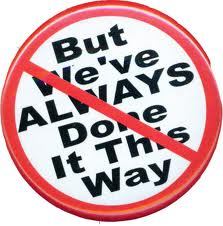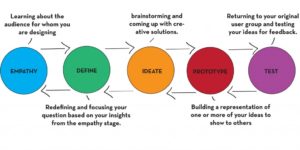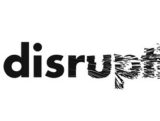But we’ve always done it this way! Challenging our assumptions…
- On 22-01-2018
Schools and teachers often ask us to support them in embedding the Technologies Curriculum or to talk about how they can go about nurturing critical and creative thinking better or deepening the problem solving skills of students or even developing the students to be active learners rather than passive ones.
Whilst I think these are all valuable and valid concerns and aspects to focus on for professional learning, I think schools and school leaders need to think more systemically and dig a little deeper.
Most schools really need to ask themselves questions such as;
- Why are our students becoming passive over their time at our school?
- Are our students winning the game of school or the game of being future-ready?
- Is the learning environment developing our students to naturally be curious, problem-solvers, and critical and creative thinkers?
- Is our school model of learning actually delivering our vision? Do we even have a vision? Are our school processes and practices aligned to our vision?
These are uncomfortable questions to ask and I challenge your school to ask them. Let me be blunt – if your teachers are delivering the mandated Curriculum in silos (whether in Primary or Secondary schooling) then I say you are doing your students an injustice. You may be winning the game of NAPLAN or Year 12 results but it is unlikely you are preparing students to be future-ready.
This was the realisation of the leadership team at Sacred Heart College Geelong. Despite performing brilliantly in NAPLAN and Year 12, despite having the IB Middle Years program, despite delivering a broad modern program of learning, despite being a school of choice in their area – Anna Negro and her leadership team realised that they really weren’t delivering on the school’s vision for the girls. The realisation that they were not meeting their commitment to prepare the students for their future has led the school to begin a process of reinventing the entire way the school operates. This is not a small undertaking. It will take years for the school to do the thinking, planning and conversations to have their vision come together.
My point is not to simply to challenge the underlying assumptions of learning at your school but to have you contemplate the provocation and necessity of integrating your curriculum and even delivering STEM / STEAM within the school.
STEM / STEAM?
You may have heard a lot in the media around STEM or STEAM. Money is being thrown at it by many organisations and governmental bodies and it seems to be the latest fad. Even we have applied for one of the many grants that are around!
There are a lot of misconceptions about STEM (Science Technology Engineering, Maths), its cousins STEAM (which includes Arts) or DSTEAM (which also includes Design). Fundamentally, STEM is an artificial construct supposedly about developing learning that touches upon the disciplines of Science, Technology, Engineering and Maths. For the most part it didn’t exist anywhere until some marketing guru coined the acronym and started selling technology to everyone. In other words, the concept of STEM has been hijacked to sell technology to schools and get governments to spend lots of money.
This is not to say there isn’t something to be addressed by the concept of STEM. In many ways STEM represents the reality of each of those individual disciplines in practice. When one is tackling real life problems all the disciplines are present – Science, Maths, Arts, English, History, Geography, etc. For example you can’t build a house or any product without authentically addressing many disciplines. There are really no demarcation lines as there seem to be in curriculum documents. However I am not just talking about the content of those disciplines (which for the most part teachers cover quite well in their lessons).
I believe that STEM and authentic units that integrate curriculum have the benefit of creating a learning environment that NATURALLY develops thinking. Integrated curriculum units are all about the thinking frameworks that are needed to bring everything together – i.e design thinking, computational thinking, scientific inquiry, problem solving, critical AND creative thinking, as well as the capabilities such as collaboration, empathy, resilience, etc. When we isolate the disciplines from one another we undermine the thinking frameworks and make learning artificial and ungainly.
Thinking Environment
If we explore STEM and the integration of curriculum from the perspective that we are setting up a natural thinking environment then we can look at how those thinking frameworks can influence other domains. For example – the design thinking framework is perfect for English. The Empathise Phase is about understanding what the writer is saying in a piece of text. This would include background knowledge, inferencing, contextual clues, key words, etc. The Define Phase is interpreting what exactly is the English question asking of you once you understand all the above. and so on … you can get the flow.

In my experience the concept of “STEM” and integrating curriculum sets up a natural environment for students to use all the thinking frameworks and capabilities in an authentic way. This is what students and teachers have found when we have run authentic design challenges with them.
By the way, this doesn’t mean every aspect of the curriculum can be addressed in this manner. However it is worth having a conversation with us if you want some ideas about what you can do.
Upcoming Integrating STEM and Artificial Intelligence Workshops
If you are interested in finding out more about the HOW we have two practical workshops coming up in Melbourne, Perth and Brisbane this March. Led by a Teacher for Teachers it is an extraordinary opportunity to discuss the practicalities and be supported in your thinking. For more information click on the links below:
- Melbourne:
- Perth:
- Brisbane:



0 Comments